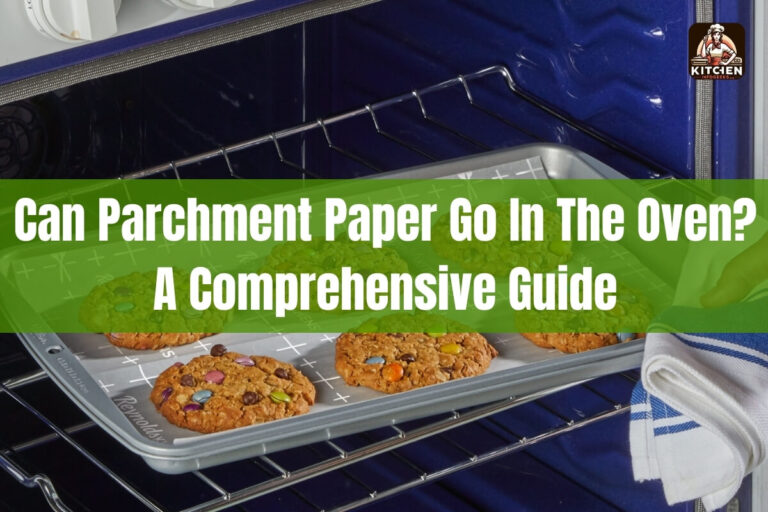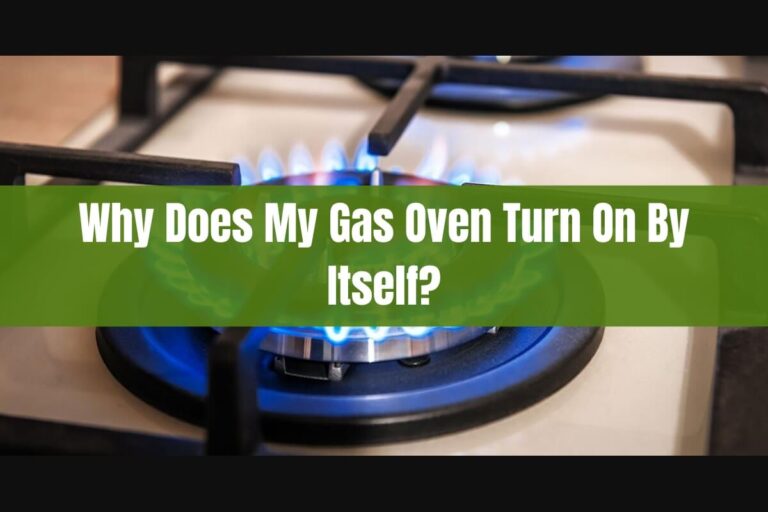
Many people wonder if it’s safe to use aluminum foil in the oven. The short answer is yes, you can put aluminum foil in the oven, but there are some important precautions to follow. In this comprehensive guide, we’ll cover everything you need to know about using aluminum foil safely and effectively for baking and cooking.
Aluminum foil is a staple in most kitchens, thanks to its versatility and affordability. But when it comes to using it in the oven, there are some dos and don’ts to keep in mind. We’ll dive deep into the proper ways to use foil, instances when you should avoid it, and troubleshooting common issues.
What is Aluminum Foil?
Before we get into the specifics of using aluminum foil in the oven, let’s understand what it is and how it’s made.
Aluminum foil is a thin sheet of aluminum that has been rolled to a thickness of just 0.0006 to 0.008 inches. It’s made by rolling large aluminum slabs through a series of hot and cold rollers until the desired thinness is achieved.
During the manufacturing process, two layers of foil are rolled together, resulting in one side being shiny and the other being dull. The shiny side is the one that comes in contact with the polished steel rollers.
Is it Safe to Use Aluminum Foil in the Oven?
Advantages of Using Foil in the Oven
There are several benefits to using aluminum foil in the oven:
- Conducts Heat Well: Aluminum is an excellent conductor of heat, which means that foil can help your food cook more evenly by distributing heat effectively.
- Helps with Even Cooking: Foil can be used to cover dishes or tent over foods to prevent overcooking or burning on the surface while the inside continues to cook.
- Makes Cleanup Easier: Lining baking sheets or pans with foil can make cleanup a breeze. Simply remove the foil and discard it after cooking, leaving your pan or sheet clean.
Potential Risks of Improperly Using Foil
While aluminum foil is generally safe for oven use, there are some potential risks to be aware of if not used correctly:
- Oven Damage: Improperly using foil, such as lining the oven bottom or racks, can lead to issues like scratched enamel, blocked air vents, and even damage to heating elements.
- Fire Hazards: If foil touches a hot oven surface or heating element, it can melt and potentially start a fire.
- Health Concerns: Some studies suggest that aluminum can leach into foods, especially when cooking acidic dishes like tomatoes or citrus-based recipes. While the risk is generally low, it’s something to be aware of, especially if you’re trying to reduce your aluminum exposure.
Proper Ways to Use Aluminum Foil in the Oven
Now that we’ve covered the basics, let’s dive into the proper ways to use aluminum foil in the oven.
Lining Baking Pans/Sheets
One of the most common uses of aluminum foil in the oven is lining baking pans or sheets. This can help with easy cleanup and prevent sticking. Here are some tips for lining pans/sheets:
- Shiny Side Up or Down? It doesn’t matter which side of the foil faces up or down when lining pans. However, if you’re using non-stick foil, the dull side is the non-stick surface, so you’ll want that facing up.
- Crimp the Edges: For a snug fit, crimp the foil around the edges of the pan or sheet.
- Examples: Lining pans/sheets is great for baking cookies, breads, roasting vegetables, and more.
Covering Dishes
Another common use of foil in the oven is covering dishes to prevent browning on the surface or to lock in moisture.
- Tenting: To prevent over-browning on the top of a dish, you can loosely tent a sheet of foil over the top.
- Sealing in Moisture: For dishes that require a steaming effect, you can tightly seal the foil over the top of the dish.
Disposable Baking Dishes
In addition to lining pans and covering dishes, you can also use aluminum foil in the form of disposable baking pans or trays. These can be a convenient option for one-time use and easy cleanup.
When NOT to Use Aluminum Foil in the Oven
While aluminum foil has many practical uses in the oven, there are some instances when you should avoid it or use an alternative instead.
As an Oven Liner
One of the most common mistakes is lining the bottom of the oven with aluminum foil. This can lead to several issues:
- Blocked Air Vents: Foil can block the air vents in your oven, which can disrupt the flow of heat and air circulation, leading to uneven cooking.
- Scratched Enamel: The foil can scratch the enamel surface of your oven, leading to permanent damage.
- Heating Element Damage: If the foil touches a heating element, it can melt, causing potential damage or even a fire hazard.
Instead of lining the oven bottom with foil, consider using a catch pan or placing a foil-lined baking sheet on the lowest rack to catch any drips or spills.
For Acidic Foods
Acidic foods like tomatoes, citrus fruits, and vinegar-based dishes can react with aluminum foil, causing the foil to disintegrate or develop holes. This can lead to small pieces of foil ending up in your food, which is a potential safety hazard.
For acidic dishes, it’s best to use oven-safe glass or ceramic baking dishes instead of foil pans or trays.
When Baking Cookies
While you can line baking sheets with foil for cookies, it’s generally not recommended. The direct contact between the foil and the cookie dough can cause uneven cooking and potentially burn the bottoms of the cookies.
For baking cookies, it’s better to use parchment paper or a silicone baking mat instead of aluminum foil.
In the Microwave
It’s important to note that you should never put aluminum foil in the microwave. Microwaves cause a phenomenon called the “arcing effect” when they interact with metal, which can cause sparks and potentially start a fire.
If you need to cover a dish in the microwave, use a microwave-safe plastic wrap or a microwave-safe lid instead of foil.
Troubleshooting Common Aluminum Foil Issues
Even when used correctly, you may encounter some common issues with aluminum foil in the oven. Here’s how to troubleshoot them:
Discoloration/Darkening
If you notice your aluminum foil darkening or discoloring during baking, don’t panic. This is a normal occurrence caused by the moisture from the food interacting with the foil, resulting in a buildup of aluminum oxide.
This discoloration is harmless and won’t affect the taste or safety of your food.
Holes/Deterioration
If you’re using foil with acidic foods or at high temperatures (above 400°F/200°C), you may notice holes or deterioration in the foil. This is due to the acid or high heat breaking down the aluminum.
To avoid this issue, use oven-safe glass or ceramic dishes instead of foil for acidic foods or recipes that require higher temperatures.
Sticking
Sometimes, even when using foil, you may encounter issues with food sticking to the foil or pan. To prevent sticking, you can grease the foil lightly with oil or use a non-stick cooking spray.
Alternatively, you can opt for parchment paper instead of foil, as parchment is naturally non-stick and won’t affect the cooking process.
Aluminum Foil Alternatives for Oven Use
While aluminum foil is versatile and convenient, there are some alternatives you can use in the oven:
- Silicone Baking Mats: These reusable mats are non-stick and oven-safe, making them a great option for lining baking sheets or pans.
- Parchment Paper: Parchment paper is a heat-resistant, non-stick paper that can be used for lining baking sheets or wrapping dishes. Just be sure to check the manufacturer’s temperature recommendations.
- Oven-Safe Dishes: For dishes that require covering or baking without a pan, use oven-safe glass, ceramic, or stoneware dishes instead of foil pans or trays. These are more durable and won’t react with acidic foods or deteriorate at high temperatures.
- Silicone Oven Liners: While you shouldn’t line the bottom of your oven with foil, silicone oven liners are a safer alternative. These heat-resistant mats catch spills and drips, making cleanup easier without the risk of damaging your oven’s heating elements or enamel surface.
It’s important to note that while these alternatives can be useful, they may not provide the same level of heat conduction and even cooking as aluminum foil. Additionally, some options like silicone mats or parchment paper may not be suitable for certain recipes or cooking methods.
When using any of these alternatives, be sure to follow the manufacturer’s instructions and recommendations for safe oven use. And remember, it’s always best to keep a close eye on your food while it’s cooking, regardless of the materials you’re using.
Conclusion
In summary, yes, you can safely use aluminum foil in the oven for various purposes, such as lining baking sheets or pans, covering dishes, and even using disposable foil baking dishes or trays. However, it’s crucial to follow the proper techniques and precautions to avoid potential risks like oven damage, fire hazards, or health concerns.
When using aluminum foil in the oven, remember to:
- Never line the bottom of your oven with foil
- Avoid using foil with acidic foods or at very high temperatures
- Don’t put foil in the microwave
- Consider alternatives like silicone mats, parchment paper, or oven-safe dishes for certain applications
By following these guidelines and using common sense, you can enjoy the convenience and benefits of aluminum foil in the oven while minimizing any potential issues. Whether you’re baking cookies, roasting vegetables, or preparing a casserole, aluminum foil can be a versatile and helpful tool in your kitchen arsenal.






